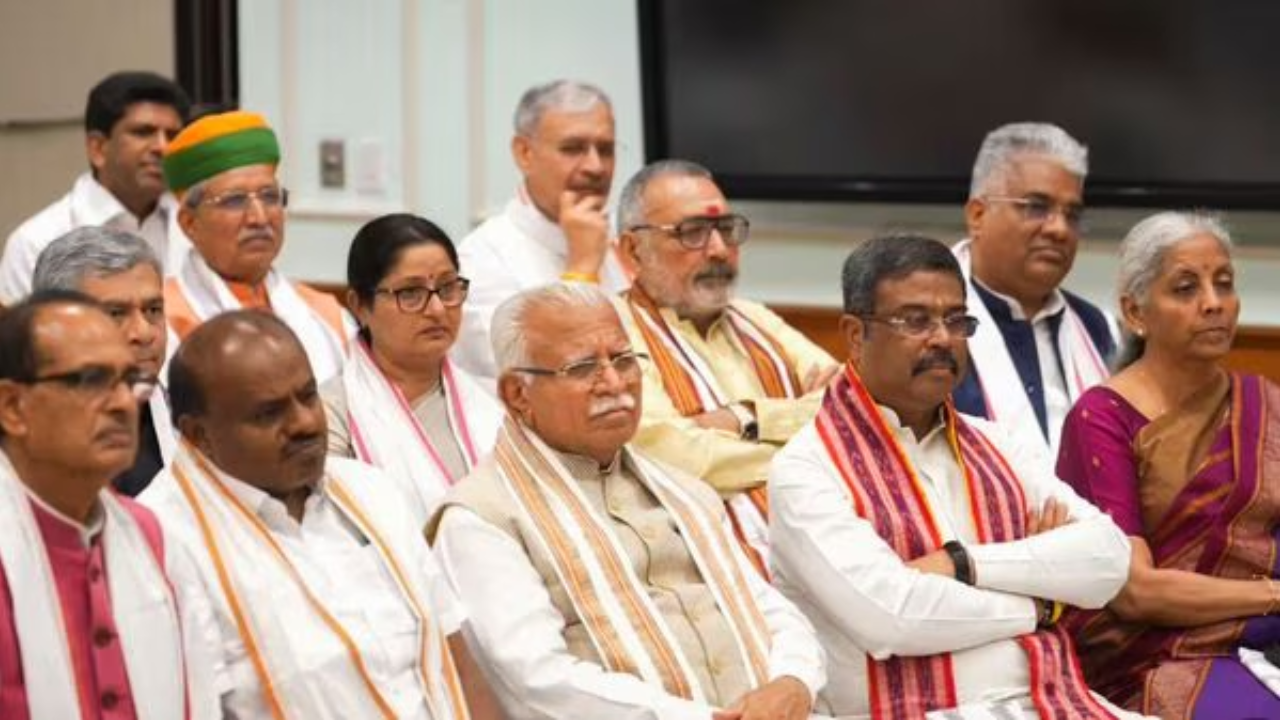Formation of Government: Following the 2024 Lok Sabha elections, the BJP-led NDA government has been established under Prime Minister Narendra Modi’s leadership. This event marks a historic third consecutive term for Modi, despite the BJP experiencing a reduction in the number of seats. The Opposition has interpreted the BJP’s inability to secure an outright majority as a sign of their defeat. However, this narrative fails to account for the resilience and adaptability of the BJP’s coalition politics.
BJP’s Governance Agenda: The decrease in the number of BJP seats does not signal an end to the party’s governance agenda, which remains focused on India’s development and cultural revival. The saffron party has a proven track record of successfully managing coalition governments, as demonstrated by the leadership of Atal Bihari Vajpayee and his deputy Lal Krishna Advani. This current scenario presents another challenge within a democratic framework but also serves to strengthen the BJP’s core ideologies and policies through coalition dynamics.
Modi’s 3.0 Cabinet: Prime Minister Modi’s new NDA government provides a strong rebuttal to Opposition propaganda. The formation of Modi’s 3.0 cabinet sends a clear message that the BJP’s political strength and ideological commitment remain intact, regardless of the seat count. PM Modi’s unwavering focus on development and the cultural revival of Bharat stands firm. The BJP is prepared to engage in respectful negotiations with its allies to ensure the continuity of its policy, and political, geopolitical, and economic agendas.
Opposition Narrative Countered: The narrative that the BJP would be forced to cede important cabinet posts to its allies has been effectively countered. The reappointment of experienced ministers indicates a continuity of policy and emphasizes stability and experience in governance. This is particularly significant at a time when India faces numerous challenges on various fronts, including economic recovery post-pandemic, border security issues, and the need for infrastructural growth.
Strategic Masterstroke: The composition of the new Modi cabinet is a strategic masterstroke that reinforces the BJP’s leadership narrative. It clearly declares that the party is not only in command but also prepared to lead India towards a future defined by robust security, dynamic diplomacy, and sustainable development. This cabinet reshuffle is a testament to the BJP’s ability to balance alliance dynamics while maintaining a firm grip on the government’s direction.
No Compromise on Ideology: One of the most significant messages conveyed through the new cabinet is that the BJP’s ideological base will not be diluted. By retaining key figures like Amit Shah, Rajnath Singh, and Nitin Gadkari, who have been instrumental in driving the party’s vision and policies, the Modi government signals continuity in its ideological stance. These leaders have been pivotal in shaping the BJP’s approach to governance, emphasizing economic development, national security, and cultural revival. Their continued presence in the cabinet ensures that these priorities will remain at the forefront of the government’s agenda.
Experience in Cabinet: In response to critics’ concerns about Modi’s ability to manage a coalition government, the strategic inclusion of seven former chief ministers in the cabinet serves as a robust counter to these allegations. The induction of seasoned leaders like Shivraj Singh Chouhan, Rajnath Singh, ML Khattar, Jitan Ram Manjhi, Kumaraswamy, and others who have helmed state governments brings a wealth of administrative experience to the central government. This move consolidates Modi’s position and sends a clear message that the coalition will benefit from the diverse expertise of these veteran politicians.
State Elections Strategy: The recent unveiling of Modi 3.0 cabinet is more than just a reshuffle; it is a strategic maneuver poised to influence upcoming state elections in Haryana, Maharashtra, and Jharkhand. Haryana sees the BJP retaining key ministers as a testament to its social engineering prowess. Maharashtra, with its intricate alliance dynamics, showcases the delicate equilibrium the NDA strives to maintain. Jharkhand, rich in tribal hues, signals a potential shift in the state’s political tapestry with a focus on non-tribal constituencies. This strategic approach ensures the BJP is well-prepared to tackle the challenges ahead, maintaining a strong ideological base and an unwavering commitment to India’s development.







